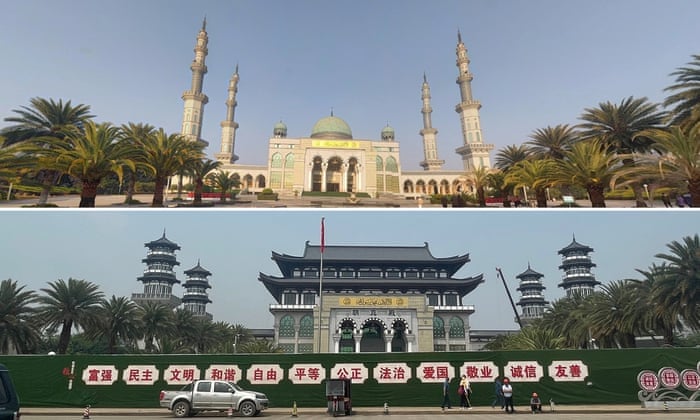cross-posted from: https://feddit.org/post/3422671
cross-posted from: https://feddit.org/post/3422615
Essay by Carl Minzner, Professor at Fordham Law School and a senior fellow for China Studies at the Council on Foreign Relations.
China is steadily sliding deeper into the counterreform era. Economically, it is slowing down. Ideologically, it is closing up. Politically, it is steadily pivoting back toward personalistic one-man rule. As these trends deepen, Beijing’s leaders are erasing core elements of both the reform and revolutionary eras, reviving ruinous Maoist governance practices of the 1950s, and turning back to China’s imperial history in an effort to build a new ideological foundation for their authoritarian rule. Far from paving the way for China’s twenty-first-century rise, Beijing’s counterreforms are exacerbating its structural problems, weakening the nation and undermining its stability.
[...]
This era—the time of Xi Jinping—is the age of counterreform. Beijing's prime goal is no longer revolutionary social change or even economic growth, but regime stability [...] As Beijing ... slides deeper into the morass of the counterreform era, the PRC [People's Republic of China] is in fact becoming far weaker and less stable.
[...]
The trend toward closure is spreading. Security officials regularly fan fears of foreign espionage, particularly around April 15, designated since 2016 as National Security Education Day. A 2023 anti-espionage crackdown on consulting firms shocked foreign corporations trying to conduct statistical research and due diligence. China's LGBTQ+ groups, meanwhile, are worried by fresh official messages that not only their organizational activities but their members' own sexual and gender identities themselves may be politically problematic. New laws criminalize defamation of regime-designated martyrs and heroes.
[...]
Economically, China continues to slow. Covid lockdowns, a rapidly aging population, and the implosion of a massive property bubble have taken a toll on the once buzzing economy. Annual growth, which registered 6.7 percent as recently as 2016, has steadily fallen. For 2024, the official rate is expected to come in at no higher than 5 percent (the IMF projection) and could be as low as 3 percent.
[...]
Slowing growth is causing real pain. In 2023, youth unemployment [End Page 7] surged to a record high, topping 21 percent. Local governments reliant on land sales to finance rising expenditures are finding themselves strapped for cash. With surging local-government debt has come unpaid wages and pensions and utility price hikes, which ranged from 10 to 50 percent this year in Shanghai and Guangzhou. China's economy continues to boast real strengths, of course. It leads the world in the manufacture of batteries, solar cells, and electric vehicles. But with graying demographics, unfavorable geopolitical winds, and national leaders who resist a shift to a growth model focused on domestic consumption, China faces a slower, more stagnant economic future.
[...]
The party-state's propaganda organs have been infusing portrayals of Xi with the strengthening aroma of a cult of personality. Official portraits of him grow ever larger while CCP [Chinese Communist Party] publications grow ever more replete with his quotations. And woe be to the careless cadre who misprints the supreme leader's name. When, in March 2023, a single sentence in the CCP-flagship People's Daily that was supposed to mention him nonetheless failed to do so, millions of copies were recalled.
[...]
The ruthless and comprehensive "rectification" of Hong Kong since 2019, however, has been the most spectacular example of Beijing's erosion of prior bureaucratic and technocratic norms.
[...]
Stronger controls over private life are returning as well. To ward off the specter of social unrest, Xi has been reviving Maoist models of neighborhood surveillance. Since 2017, moreover, mass political detentions in the far northwestern region of Xinjiang have seen more than a million Uyghurs and other ethnic minorities sent to reeducation camps. Well-off urban Chinese citizens initially brushed these off as anachronistic ideological throwbacks or necessary measures to tame ethnic trouble in remote borderlands.
[...]
What I see [...] is a China in decay. The country today resembles less a rapidly rising power such as the Soviet Union or Japan in the 1950s—full of vigor, on the cusp of a decades-long expansion—and more a mix of stagnant Brezhnevera USSR and 1990s Japan, after its economic bubble collapsed and it entered a long period of sluggish growth. Resting crazy-quilt style atop the whole thing is a patchwork of unresolved Maoist politics, latent reform-era social tensions (inequality is now as sharp as it is in the United States), and the approaching reality of China's becoming (by about 2050) the world's most aged society.
[...]
As China heads deeper into the counterreform era, the country's worst enemies are neither the foreign threats that Beijing imagines around every corner nor the rising domestic tensions that the regime wants so desperately to suppress. Rather, they are China's own historical and institutional demons that the PRC's leaders are in the process of reviving.
